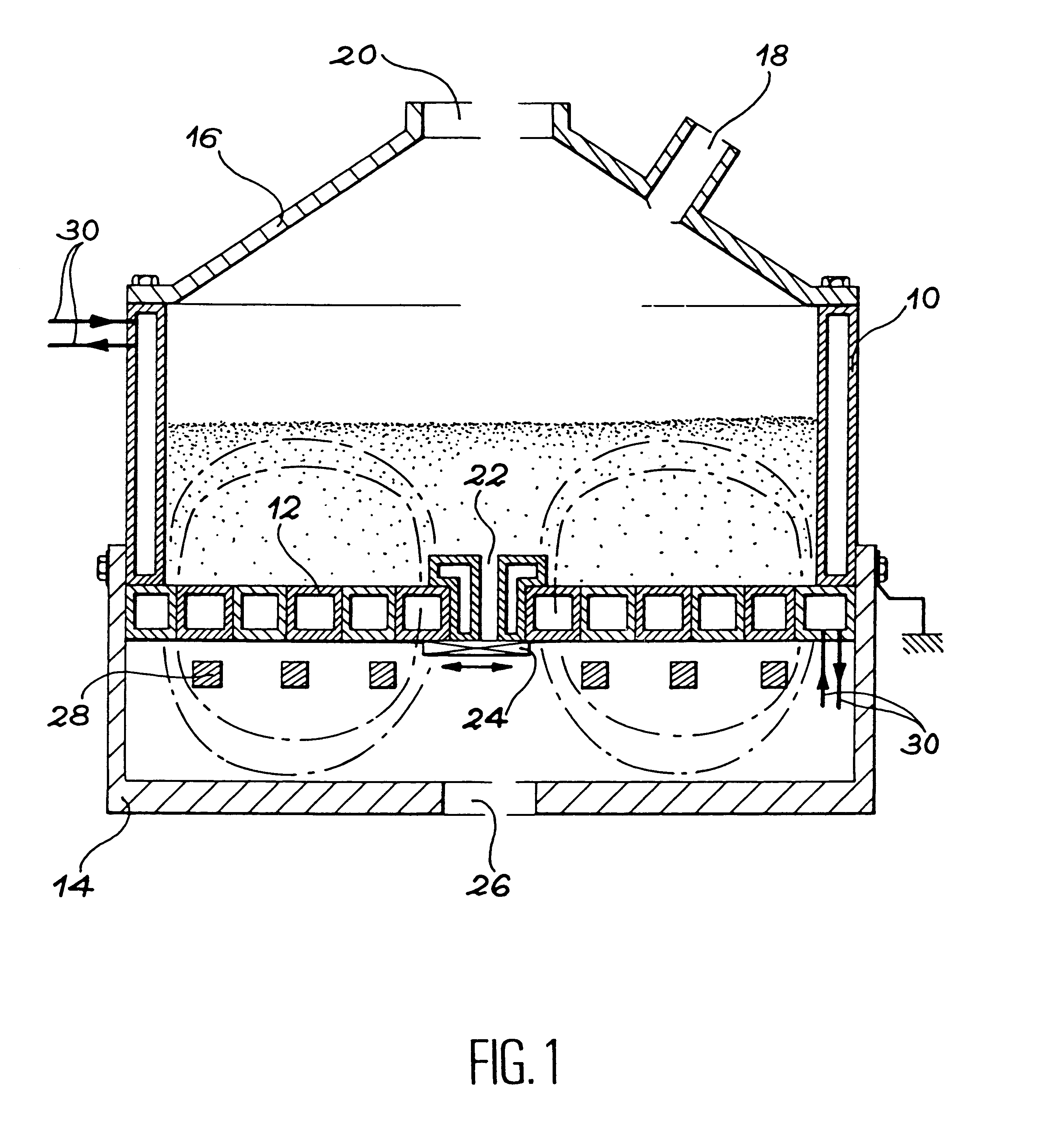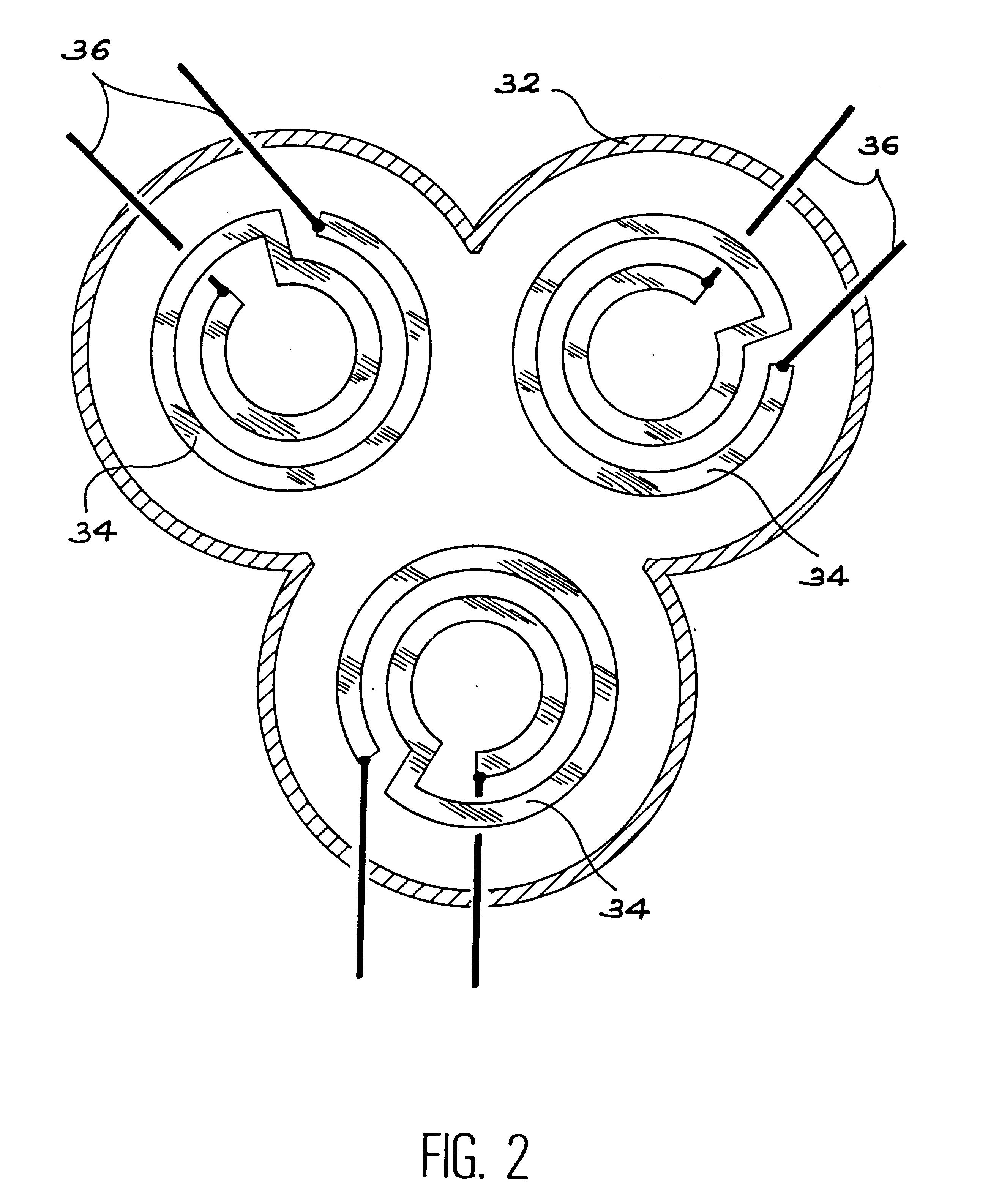Glass induction melting furnace using a cold crucible
a glass induction melting furnace and cold crucible technology, applied in the field of embolism, can solve the problems of complex furnace type, refractory pollution, and crucible type not being compatible with all melting baths
- Summary
- Abstract
- Description
- Claims
- Application Information
AI Technical Summary
Benefits of technology
Problems solved by technology
Method used
Image
Examples
Embodiment Construction
FIG. 1 shows an embodiment of a glass melting furnace according to the invention, and comprises a cooled crucible composed of a vertical ring segment 10 with a double metal wall placed on a horizontal bottom 12 transparent to the electromagnetic field. For example, this assembly may he placed on a bowl shaped base 14. It may be covered by a lid 16 that includes several access orifices, namely a material inlet orifice 18 and a combustion gas exhaust flue 20. For example, the bottom 12 may include a central outlet orifice 22 closed off by a withdrawable door 24. The base 14 then includes a corresponding outlet orifice 26.
The only induction heating element 28 is placed immediately under the bottom 12, inside tank 14. In this embodiment, this heating element is an induction coil with one or several turns.
The vertical ring segment 10 and the bottom 12 are each designed to enable circulation of cooling liquid which is shown by ducts 30 shown diagrammatically. The ring segment comprises co...
PUM
| Property | Measurement | Unit |
|---|---|---|
| Thickness | aaaaa | aaaaa |
Abstract
Description
Claims
Application Information
 Login to View More
Login to View More - R&D
- Intellectual Property
- Life Sciences
- Materials
- Tech Scout
- Unparalleled Data Quality
- Higher Quality Content
- 60% Fewer Hallucinations
Browse by: Latest US Patents, China's latest patents, Technical Efficacy Thesaurus, Application Domain, Technology Topic, Popular Technical Reports.
© 2025 PatSnap. All rights reserved.Legal|Privacy policy|Modern Slavery Act Transparency Statement|Sitemap|About US| Contact US: help@patsnap.com



